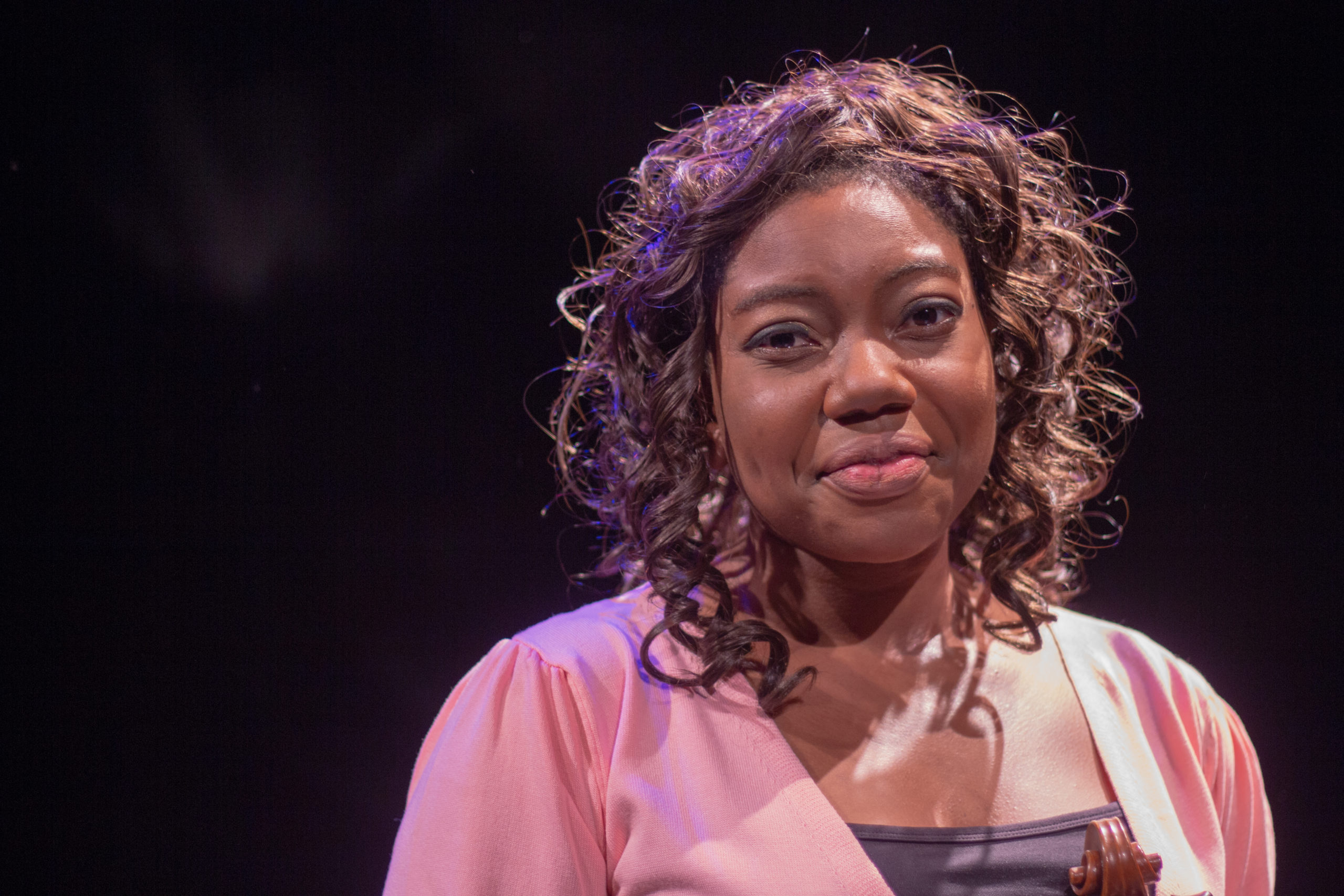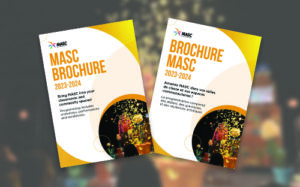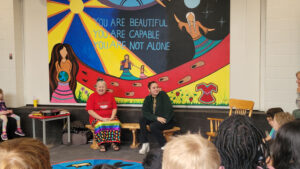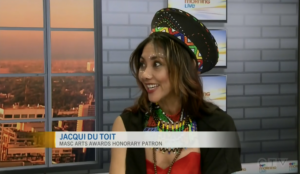Interview: Violist, composer, and storyteller Kathryn Patricia
By Jessica Ruano | December 3, 2021

This interview was originally published on Apt613.ca
Kathryn Patricia Cobbler is a musician, artist, storyteller, and catalyst for creative experiences. As an orchestral musician, she has performed with the Toronto Symphony’s Trans-Siberian Orchestra, Ottawa Symphony Orchestra, and Ottawa Jazz Orchestra. As a chamber and solo musician, she has been featured in the Music & Beyond, Southminster United Church, Glebe St. James, Church of the Ascension, and Trinity Anglican Concert Series. As a multi-faceted musician-educator, she engages audiences of all ages in interactive performances, residencies, and musical workshops. Kathryn was recognized this week as one of CBC Ottawa’s 2021 Trailblazers for her work as an arts educator and anti-racism advocate. In this interview, Kathryn talks about collaborating with other Ottawa-based artists and inspiring students to express themselves through visual arts and music.
Kathryn Patricia performs. Photo provided by MASC.
MASC: You seem to be collaborating with every Ottawa artist in my Instagram feed! How did these partnerships form, and what do you enjoy especially about interdisciplinary collaboration?
Interdisciplinary collaboration is at the heart of my artistic practice. All these artistic projects started one conversation at a time connecting with artists (or other artists connecting with me) because we were inspired by one another’s work. Some of those conversations even began on Instagram!
My favourite thing about engaging in interdisciplinary collaborations is the result that comes from interpreting an artistic concept through different lenses of art-making. As people we are multifaceted, and I think the way we experience and engage in the arts should be as well. Interpreting an artistic concept through multiple artistic mediums provides more avenues of engagement for audience members.
As people we are multifaceted, and I think the way we experience and engage in the arts should be as well.
Through these artistic collaborations, I have taken on the role of recording artist, performer, and co-creator in longer-term residency projects. Some exciting collaborations I have had most recently were with pianist John Kofi Dapaah and dancer-choreographer Elizabeth Emond-Stevenson of Take Up Space Dance, as well as with fellow MASC artists Skeleton Key Theatre and Ottawa Dance Directive. It was such a wonderful experience to be in the studio with Kate Smith and Scottie Irving of Skeleton Key Theatre recording for upcoming productions, blending musical performance and storytelling. Dream & True North was part of a Residency with the Ottawa Dance Directive. In a time of physical distancing, through this project we explored the concepts such as connection, disconnection, vulnerability and intimacy through our art forms.
Collaborating with these amazing artists has helped to deepen my own artistic practice by exploring the space that connects our different instruments and art forms.
I’m lucky enough to have seen your MASC Video-on-Demand in which you inspire listeners to express themselves through visual arts while listening to your music and storytelling. How did you come to discover this approach?
In my artistic journey, I began as a visual artist, which has influenced my composing style, particularly my creative process. As a viola and loop pedal artist, I often compose in layers, almost as one may approach painting a landscape or portrait. Oftentimes when I compose, it starts from the inspiration of a place, emotion, or character. One art form tends to speak to another!
As a member of MASC, what do you gain through offering your workshops in schools and in the community?
Offering workshops and concerts in community and schools is such rewarding work. I was really excited to start off the 2021 year with a MASC residency at St. Catherine School. I presented my music-inspired landscape painting residency, Sound In Living Colour. It was great to work with the students and to see their visual interpretations and inspirations of the music. In doing these workshops, I am always inspired by the students’ visual creations!
Kathryn’s recent residency at St. Catherine School inspired students to create works like this one by Chloe M. in Grade 3. Photo provided by MASC.
You talk about using Multiple Intelligences Theory to fuel creative experiences. How does this play out in your workshops?
Multiple Intelligences Theory creator Howard Gardner has had a huge impact on my work as a workshop facilitator. This system of measuring IQ recognizes multiple types of intelligences, rather than just one: Interpersonal, Logical-Mathematical, Naturalist, Spatial, Bodily-Kinesthetic, Linguistic, and Musical. Approaching my educational workshops and concert programming from this lens helps to engage learners from different “intelligence centres” and learning styles. Within my programming, I use Multiple Intelligence Theory as a way of providing many points of engagement. We all learn and see the world through different lenses. Using this theory helps provide various ways of experiencing an activity and makes it more accessible to students.
Why do you think it’s important for our local community to have access to professional artists?
Art is a transformative force in our lives. The strength of working with a professional artist comes from our experience not just in the training of our art form, but in honing our creative process. Being well-versed in each step of artistic discovery helps us to guide and encourage others along their own artistic journey. Having access to professional artists allows students and community members to enjoy valuable and enriching creative experiences.
Latest News
View All Articles



